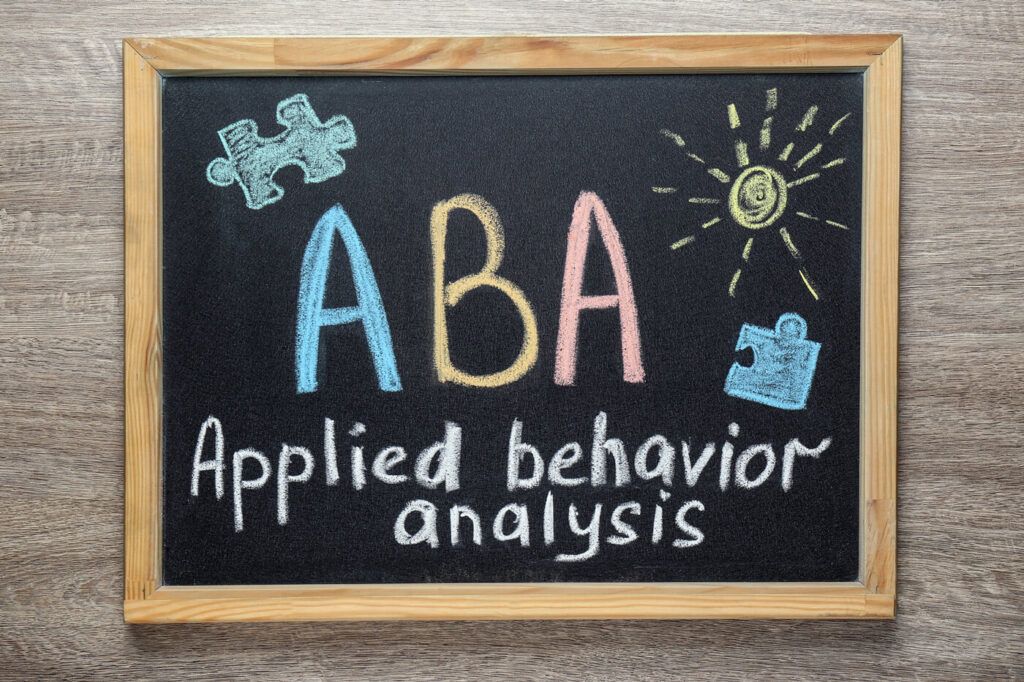A scientific method focused on understanding and altering behavior, Applied Behavior Analysis (ABA) is often used to support children with Autism Spectrum Disorder (ASD) and various developmental disabilities. Rooted in behaviorism, this approach operates on the idea that behaviors can be learned and influenced through interactions with the environment.
This method has become one of the most effective interventions for improving social, communication, and learning skills in autistic children.
What Is Applied Behavior Analysis (ABA)?
Applied Behavior Analysis is rooted in the principles of behaviorism, which posits that the environment influences all behavior. ABA focuses on understanding why certain behaviors occur and what factors reinforce or discourage them. The goal of ABA is to promote positive behaviors while reducing disruptive or harmful behaviors. This is achieved by analyzing the antecedents (triggers), behaviors, and consequences—often referred to as the ABC model—to create tailored interventions.
The flexibility of ABA allows it to be applied in various settings, including schools, homes, and therapy centers. It is particularly effective for children with autism, helping them develop communication, social, and self-care skills that enhance their daily lives.
The ABC Model: Understanding Behavior
At the heart of ABA is the ABC model, which breaks down behavior into three components:
- Antecedent: This is the event or situation that occurs before the behavior and triggers it.
- Behavior: The actual action or response that follows the antecedent.
- Consequence: The result or outcome that follows the behavior, which can either reinforce or discourage it.
For example, a child may throw a tantrum (behavior) when asked to stop playing a game (antecedent). If the child is then allowed to continue playing to stop the tantrum, this reinforces the behavior (consequence), making it more likely to happen again. In ABA, the therapist analyzes this cycle to determine how to modify the environment or the responses to encourage more positive behaviors.
Key Techniques Used in ABA
ABA employs a variety of techniques that help children develop new skills and reduce negative behaviors. These techniques are tailored to meet the individual needs of each child, making ABA a flexible and effective intervention. Some of the most commonly used ABA techniques include:
- Positive Reinforcement: This involves rewarding desired behaviors to increase the likelihood of their repetition. For example, if a child completes a task successfully, they might receive verbal praise, a sticker, or extra playtime as a reward.
- Prompting: Therapists use prompts, such as verbal cues or physical assistance, to encourage a child to perform a desired behavior. Over time, these prompts are gradually faded, allowing the child to perform the behavior independently.
- Behavior Chaining: Complex tasks are broken down into smaller, manageable steps. Each step is taught sequentially until the child can perform the entire task, such as brushing their teeth or dressing themselves.
- Natural Environment Teaching (NET): This technique involves teaching skills in real-world settings rather than in a controlled environment. The goal is to help children generalize the skills they learn in therapy to everyday situations.
- Video Modeling: In this method, children watch video demonstrations of appropriate behaviors, which they are then encouraged to imitate. This is particularly effective for teaching social and communication skills.
Benefits of ABA for Children with Autism
ABA has been widely recognized for its effectiveness in helping children with autism develop essential life skills. The benefits of ABA include:
- Improved Communication Skills: ABA helps children with autism learn how to communicate their needs and desires more effectively, whether through verbal language or alternative communication methods.
- Enhanced Social Interactions: Many children with autism struggle with social interactions, such as making eye contact or understanding social cues. ABA teaches these skills in a structured and supportive manner, improving social engagement.
- Reduction of Harmful Behaviors: ABA addresses disruptive or harmful behaviors by identifying their triggers and replacing them with more appropriate responses. This reduces the likelihood of tantrums, self-harm, or aggression.
- Increased Independence: Through behavior chaining and other ABA techniques, children can learn to perform daily tasks independently, such as dressing, eating, and personal hygiene.
- Positive Reinforcement for Long-Term Success: One of the core principles of ABA is positive reinforcement. By rewarding desirable behaviors, children are encouraged to repeat these behaviors, leading to long-term success and improvement.
Individualization in ABA Therapy
One of the most important aspects of ABA is its focus on individualization. No two children are alike, and ABA therapy is designed to meet the unique needs, strengths, and challenges of each child. Therapists begin by conducting a Functional Behavior Assessment (FBA), a systematic process used to identify the reasons behind specific behaviors. This assessment helps in creating tailored interventions that are both meaningful and effective.
For instance, a child who struggles with transitions might require a different approach than a child who has difficulty with social interactions. By understanding each child’s specific triggers and motivators, ABA therapists can design interventions that lead to meaningful behavior change.
Considerations for Parents and Practitioners
When choosing ABA therapy for a child, there are several important considerations to keep in mind:
- Family Involvement: ABA therapy works best when families are involved in the process. Parents play a crucial role in reinforcing the strategies learned during therapy and applying them in everyday life.
- Positive Focus: While reducing negative behaviors is a key component of ABA, the focus should always be on building new skills and promoting positive behavior. This approach not only supports the child’s development but also fosters a sense of accomplishment and confidence.
- Ethical Practice: It is essential to choose an ABA provider who adheres to ethical guidelines, ensuring that the therapy is respectful, humane, and effective. Providers should use evidence-based methods and involve the family in decision-making processes.
Choosing the Right ABA Provider
Selecting a qualified ABA provider is critical for the therapy’s success. When evaluating potential providers, consider the following:
- Certification and Training: Ensure that the therapists are certified and have specialized training in ABA methodologies.
- Individualized Treatment Plans: Look for providers who emphasize individualized treatment plans that are tailored to the unique needs of each child.
- Family Engagement: A good ABA provider will involve the family in the therapy process, ensuring that goals are practical and achievable in the child’s daily environment.
At OASIS Mind & Body, we believe that Applied Behavior Analysis is a powerful tool for improving the lives of children with autism and developmental disabilities. Our individualized approach to ABA therapy ensures that each child receives the support they need to thrive.
Request an appointment today and explore how our tranquil, private office space and specialized therapies can help your child develop the skills they need for a brighter future.







